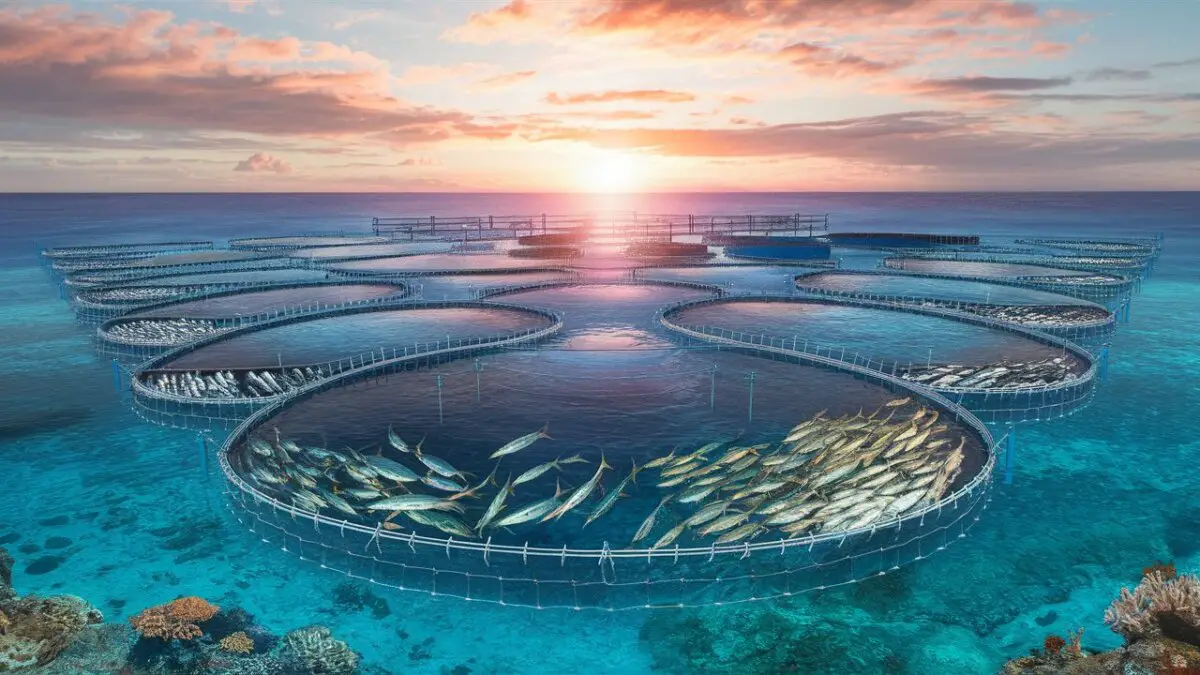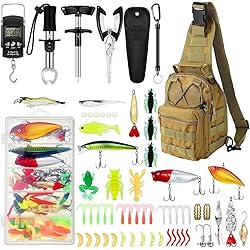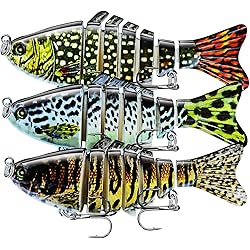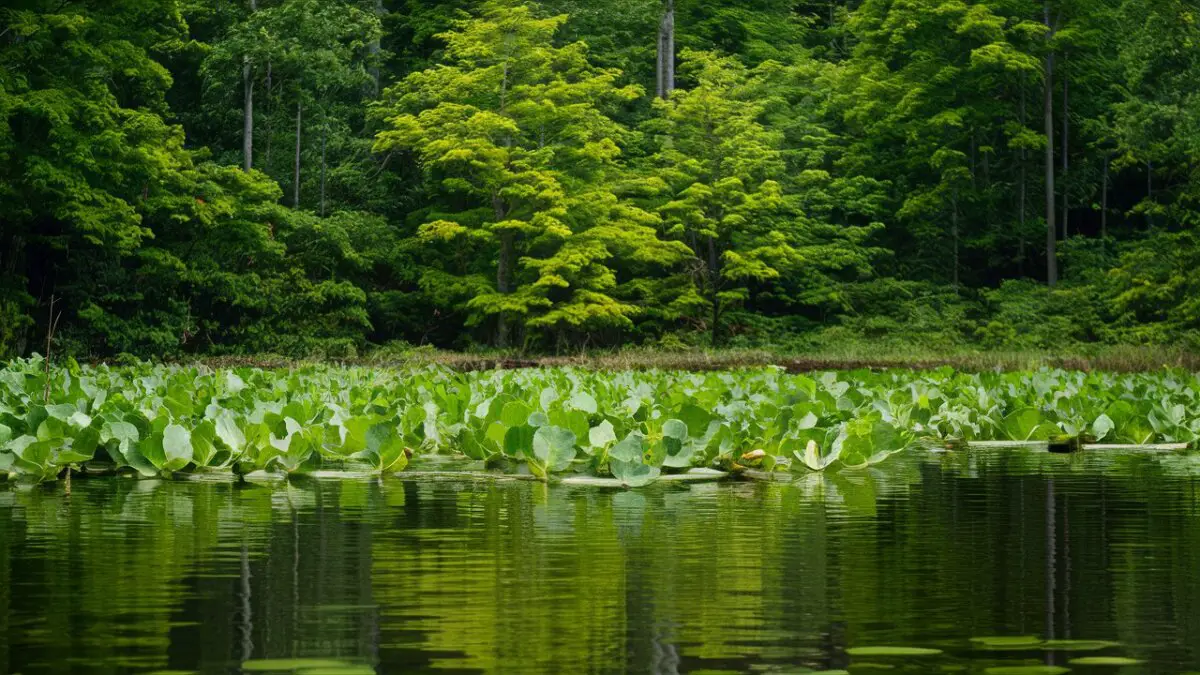Role and Global Importance of Aquaculture, or raising aquatic animals, is a very important industry because it helps the world meet its growing seafood needs.
The fishing industry is dynamic and has evolved significantly, influencing traditional fishing methods and advancing global fisheries sustainability.
Strictly controlled aquaculture systems cultivate numerous species, including fish, mollusks, and crustaceans, before they make their way from the ocean onto our plates.
These controlled environments, which enable precise feeding, disease prevention, and water quality monitoring, guarantee a healthier and more sustainable crop.
Overfishing and environmental changes have reduced native fish stocks, making aquaculture an essential means of relieving pressure on marine ecosystems.
Beyond providing a controlled and efficient means of producing seafood, aquaculture also contributes to the preservation of marine biodiversity for future generations. This helps to fulfill the demands of a growing population.
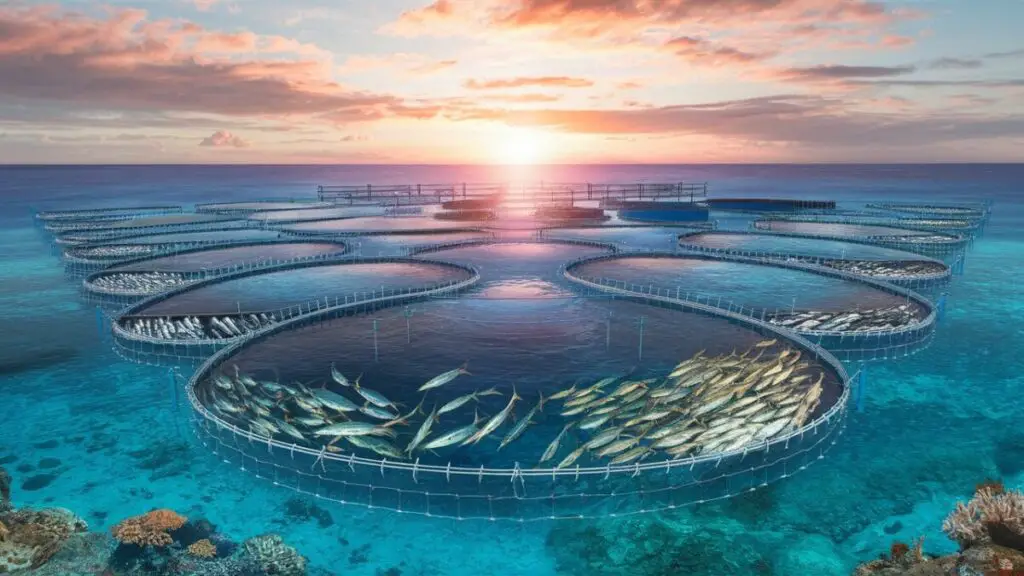
Understanding Aquaculture
Definition and Significance
In addition to meeting the growing demand for seafood, aquaculture relieves strain on marine environments by providing sustainable alternatives to wild fishing.
By reducing environmental impact, the regulated settings allow for optimal resource usage.
Beyond its contribution to the world’s protein needs, aquaculture supports coastal towns and creates jobs, which boosts economic growth.
Technological advancements and ethical standards enhance the efficiency and environmental stewardship of the sector.
Aquaculture is an essential part of food security because it increases resistance to climate change and nutritional variety.
Accepting innovation and environmentally responsible methods ensures aquaculture’s continued importance as a cornerstone for ensuring the world’s future food supply.
A Primer of Ecological Aquaculture
Historical Perspective
Fish farming has been a part of aquaculture for thousands of years, and many societies used it as a means of commerce and subsistence.
It is easier to grasp its evolution and current applications when one is aware of its historical context.
Modern technology combined with environmentally friendly methods has made aquaculture a vital sector that helps the world satisfy its seafood needs.
It now includes a wide range of species, creative agricultural methods, and environmental concerns.
Aquaculture is essential for maintaining global economies, reducing the strain on wild fish populations, and ensuring food security.
The industry is working to create a more sustainable future for aquatic food production as it develops, aiming to strike a balance between ecological responsibility and productivity.

The Global Impact of Aquaculture
Economic Contributions
Aquaculture has a positive economic impact on the environment that goes beyond just making money. In a controlled setting, the cultivation of aquatic animals lessens the negative effects of overfishing on wild populations.
Technological developments in aquaculture also improve productivity and lessen their negative effects on the environment, maintaining long-term ecological balance.
This business not only supports economies by guaranteeing a steady supply of seafood, but also tackles issues related to food security.
As the demand for aquaculture grows worldwide, ethical standards become more important, highlighting the need for ongoing innovation and regulation to maintain ecological balance as well as economic prosperity.
Food Security
The sustainable production of aquatic creatures, or aquaculture, has become more important in order to fulfill the increasing demands of a growing worldwide population.
It provides a regulated habitat for fish and other aquatic animals, as well as a consistent supply of protein and other essential nutrients.
This technique lessens the negative effects of overfishing on natural ecosystems while simultaneously enhancing food security.
Moreover, aquaculture’s capacity to adjust to a variety of settings makes it a robust global solution to the problem of hunger and malnutrition.
Strategic aquaculture integration is a crucial component in strengthening the resilience of global food systems as countries struggle to feed a growing population.
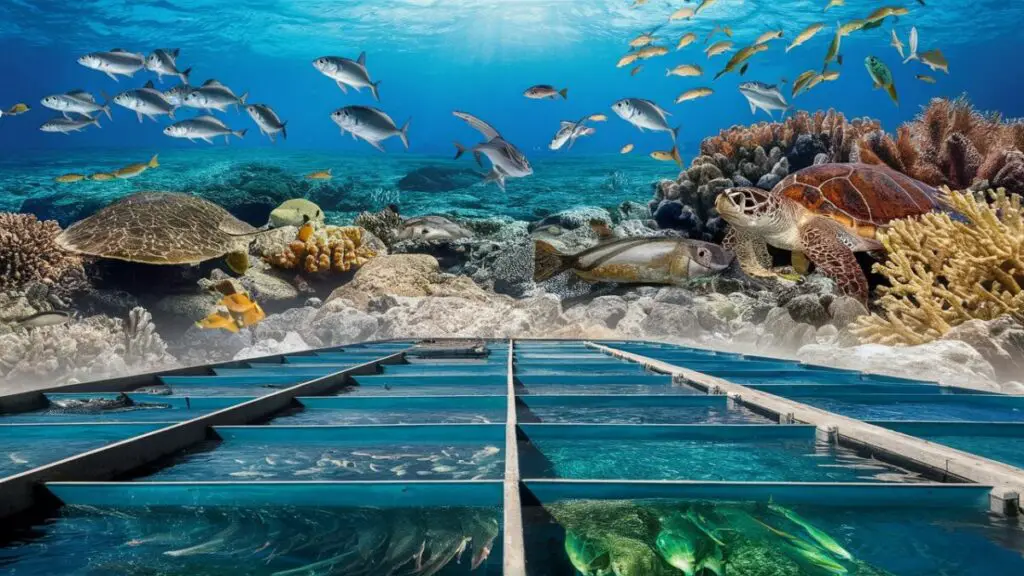
Sustainable Aquaculture Practices
Environmental Considerations
Sustainable aquaculture uses cutting-edge technologies to go beyond conservation initiatives.
Modern water filtration systems improve the quality of the water, creating ideal circumstances for aquatic life.
Moreover, the incorporation of circular economy concepts prioritizes waste reduction, resource efficiency, and the development of a closed-loop methodology.
Collaborative projects with neighborhood communities foster social responsibility and ensure equitable distribution of benefits.
A Primer of Ecological Aquaculture
By prioritizing eco-friendly practices and embracing transparency in production, the aquaculture sector not only safeguards ecosystems but also addresses global food security challenges.
This holistic approach underscores the industry’s dedication to harmonizing economic viability with environmental and social well-being.
Technology and Innovation
Aquaculture has evolved beyond conventional practices. Precision farming utilizes data analytics to automate feeding and monitor growth-promoting conditions.
Meanwhile, by effectively purifying and recycling water, recirculating aquaculture systems reduce their negative effects on the environment.
By introducing disease-resistant animals, genetic engineering increases resistance to all diseases.
Augmented reality makes real-time monitoring easier while protecting aquatic species.
These developments reduce resource use and waste while simultaneously increasing productivity and supporting environmental goals.
The aquaculture industry promotes a balance between supplying the world’s seafood needs and preserving ecosystems for future generations as it continues to incorporate cutting-edge technology.

Challenges and Solutions
Overfishing Concerns
Overfishing poses a serious threat to marine ecosystems.
This section discusses the problems caused by overfishing and looks at aquaculture as a viable solution.
Aquaculture reduces the negative ecological effects of overfishing and tackles the depletion of wild fish supplies by raising fish and seafood in regulated habitats.
It also provides a more economical use of resources by eliminating the requirement for large fishing grounds.
To better assure environmental protection, aquaculture should emphasize appropriate practices.
Embracing sustainable alternatives like aquaculture becomes essential for a healthier and more resilient marine ecosystem as we negotiate the delicate balance between satisfying the world’s demand for seafood and protecting our seas.
Disease Management
To prevent disease outbreaks in aquaculture, stringent biosecurity measures, including limited access and routine health inspections, are essential.
Additionally, investing in cutting-edge technologies for early infection detection and real-time water quality monitoring strengthens the industry’s proactive approach.
Researchers, regulatory agencies, and aquaculture stakeholders collaborate to develop effective disease control methods.
Ongoing investigation into disease-resistant plants and environmentally friendly farming methods emphasizes the dedication to long-term ecological balance.
By adopting these precautions, the aquaculture sector fulfills its obligation to preserve the health of aquatic environments while simultaneously reducing risks.
Regulatory Measures
Robust laws not only create standards for the ethical treatment of aquatic animals and environmental sustainability, but they also encourage technical innovation and developments in the aquaculture industry.
These policies support ethical agricultural practices by striking a balance between fostering economic growth and protecting ecosystems.
Furthermore, in order to handle cross-border issues and guarantee harmonized standards, an international collaborative approach is essential.
Through consistent regulation modifications that align with scientific breakthroughs and industry trends, involved parties can collaborate to address possible hazards and foster a prosperous, ethical aquaculture sector that meets the world’s seafood needs while maintaining the integrity of our oceans.

Aquaculture’s Role in Conservation
Biodiversity Protection
Aquaculture aquaculture reduces the impact on wild species and natural habitats, it is an essential instrument in the protection of biodiversity.
For a comprehensive viewpoint, seeing its place in conjunction with conservation efforts is essential.
Aquaculture can guarantee the sustainability of aquatic habitats while simultaneously meeting the increasing demand for seafood on a worldwide scale through ethical practices and smart planning.
This mutually beneficial link between aquaculture and biodiversity conservation emphasizes how important it is to use a variety of strategies in order to preserve the delicate ecological balance of our world.
Role and Global Importance of Aquaculture
Habitat Restoration
Implementing carefully managed aquaculture systems can enhance habitat restoration efforts.
By strategically placing artificial structures or cultivating specific species, aquaculturists can mimic natural ecosystems, fostering biodiversity and supporting the rehabilitation of degraded habitats.
These practices not only benefit the aquaculture industry but also showcase its potential to be a driving force in environmental conservation.
As sustainable approaches continue to evolve, the synergy between aquaculture and habitat restoration holds promise for mitigating ecological damage and promoting the health of aquatic environments.
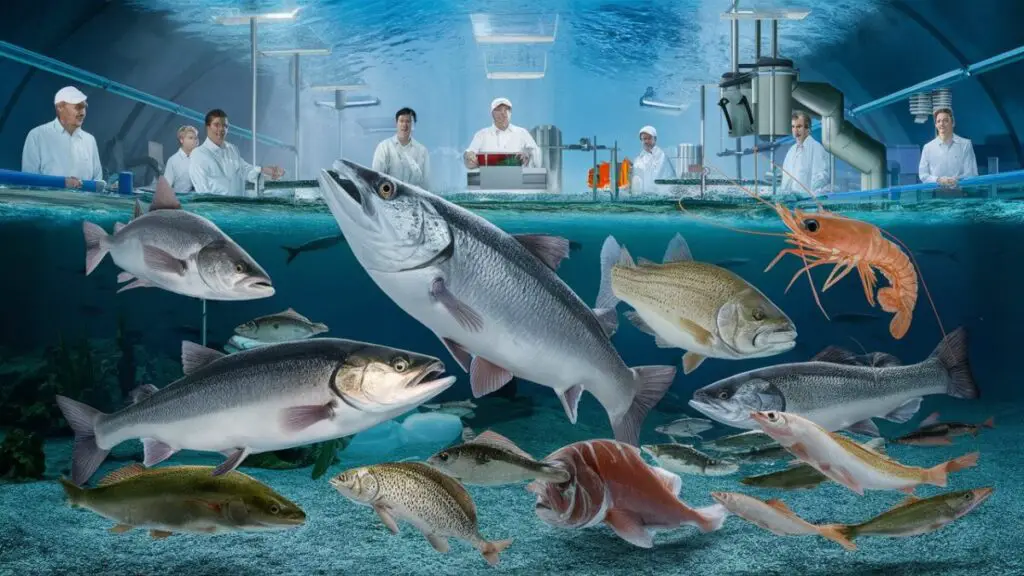
Popular Aquaculture Species
Salmon Farming
One important aspect of aquaculture is raising salmon, which requires meticulous management of the fish’s life cycle.
The procedure entails monitoring environmental effects, sea cage development, and controlled hatching.
Despite its economic importance, problems such as disease control and environmental issues persist.
On the other hand, it is clear that salmon farming helps to supply the world’s demand for seafood, provide jobs, and ease the strain on wild salmon stocks.
Understanding the complexities of this sector demonstrates its critical role in sustaining global economies and consumer demand.
Shrimp Cultivation
A major sector in many coastal regions, shrimp farming is essential to the local economy and cuisine.
Examining the subtleties of shrimp farming reveals its twin importance: it makes a significant contribution to economic growth and satisfies demand for seafood throughout the world.
The culture process, from hatchery management to pond preparation, entails complex strategies to guarantee the sustained production of shrimp of superior quality.
The world’s food aficionados’ different palates and livelihoods depend on the seafood industry’s sustained growth, which is especially important as consumers embrace a wider range of seafood options.
Tilapia Production
Tilapia’s popularity stems from its adaptability in aquaculture, where it thrives in diverse environments worldwide.
Its robust growth rate, ease of cultivation, and mild flavor contribute to its widespread appeal.
Bestway Steel Pro 12′ x 30″ Round Above Ground Pool Set
Cultivated in various regions, tilapia has become a staple in global seafood consumption.
From backyard ponds to sophisticated farms, the cultivation methods vary, but the demand for tilapia remains constant.
This section delves into the intricacies of tilapia farming, highlighting its significance in addressing the ever-growing demand for sustainable and accessible seafood.

Aquaculture and the Culinary World
Culinary Preferences
The wide range of aquaculture products, from tasty fish to succulent shrimp, is crucial in determining the tastes of people around the world.
The culinary environment changes as individuals accept a diversity of tastes, creating a tapestry of delectable foods.
The impact of aquaculture goes beyond simple subsistence; it creates a cultural link between communities via a mutual love of fish.
Examining this intricate relationship reveals how aquaculture has significantly influenced the rapidly evolving culinary scene, with flavors from the ocean appearing in kitchens all over the world.
Health Benefits
Aquaculture-raised seafood is widely known for its health benefits, making it a preferred choice for those who are health-conscious.
Its nutritional profile analysis indicates that it is a beneficial source of vitamins, minerals, and omega-3 fatty acids.
People who are trying to maintain a healthy diet can use this knowledge to make more educated decisions.
Adopting aquaculture promotes general wellbeing in addition to sustainable food practices.
The nutritional benefits of sustainably farmed seafood are becoming more recognized as a means of encouraging a well-rounded, balanced lifestyle.

Aquaculture and Climate Change
Adaptation Strategies
Implementing innovative technologies and sustainable practices is crucial for aquaculture to navigate the impacts of climate change.
Enhanced monitoring systems, resilient species selection, and eco-friendly farming methods contribute to the industry’s adaptability.
Additionally, fostering international collaborations and knowledge-sharing platforms fosters a collective approach to address challenges.
By prioritizing environmental stewardship, the aquaculture sector can not only withstand climate-related disruptions but also play a pivotal role in promoting global food security and ecological sustainability.
Mitigation Efforts
Aquaculture’s potential in climate change mitigation lies in its ability to act as a carbon sink and promote sustainable practices.
By cultivating marine organisms, aquaculture facilitates the absorption of carbon dioxide, aiding in carbon sequestration.
Bestway Steel Pro 12′ x 30″ Round Above Ground Pool Set
Additionally, adopting eco-friendly techniques reduces the industry’s ecological footprint.
A comprehensive understanding of these dynamics is imperative for harnessing aquaculture’s full potential in combating climate change and ensuring a more sustainable future for both the industry and the environment.

The Future of Aquaculture
Emerging Trends
Examining the changing face of aquaculture reveals interesting developments, such as aquaponics and land-based aquaculture, providing a preview of the industry’s future developments.
These creative solutions transform conventional fish farming methods while also addressing environmental issues and promoting sustainability.
The amalgamation of environmentally conscious practices and technology represents a paradigm shift, suggesting that aquaculture is about to undergo a dynamic and sustainable metamorphosis that will facilitate the peaceful cohabitation of aquatic ecosystems and food production.
Technological Advancements
Aquaculture is changing as a result of the incorporation of modern technology.
Automation streamlines processes, boosting productivity and reducing labor costs.
Genetic innovations such as gene editing and selective breeding improve aquatic animals’ overall well-being and development.
It is important for stakeholders to stay up-to-date with these advances so they can effectively navigate and take advantage of emerging trends.
A thorough understanding of these developments enables industry participants to stay ahead in this dynamic and quickly changing area as technology drives aquaculture into the future.

Conclusion
Using aquaculture’s enormous potential helps to prevent overfishing and preserve marine ecosystems, while also meeting the growing demand for seafood.
In terms of the economy, it promotes the development of jobs and revenue, while in terms of the environment, it reduces the ecological impact left by traditional fishing techniques.
Diverse and reliable fish selections are advantageous for foodies.
It is therefore crucial to promote ethical aquaculture methods that are consistent with the goal of feeding the earth sustainably and protecting its aquatic resources for future generations.
FAQs
Is aquaculture environmentally friendly?
Aquaculture can be environmentally friendly when practiced sustainably, incorporating responsible farming methods, and minimizing its impact on ecosystems.
How does aquaculture contribute to food security?
Aquaculture provides a reliable and consistent source of seafood, contributing to food security by meeting the increasing demand for protein-rich marine products.
What challenges does the aquaculture industry face?
Challenges include disease management, overfishing concerns, and regulatory issues, all of which require careful attention and sustainable solutions.
Why is salmon farming significant in aquaculture?
Salmon farming is significant due to the high demand for salmon globally. It also showcases the industry’s ability to farm a species traditionally caught in the wild.
What role does technology play in modern aquaculture?
Technology enhances aquaculture through innovations like precision farming and recirculating systems, contributing to sustainability and efficiency.
Hooked on Tech: Exploring the latest Fishing Gadgets that Anglers swear by.
In the realm of angling, where tradition and technology often converge, a new wave of fishing gadgets has emerged, transforming the way anglers approach their craft.
From advanced fish finders to smart bait systems, these innovations have not only revolutionized the fishing experience but have also garnered a loyal following among anglers worldwide.

